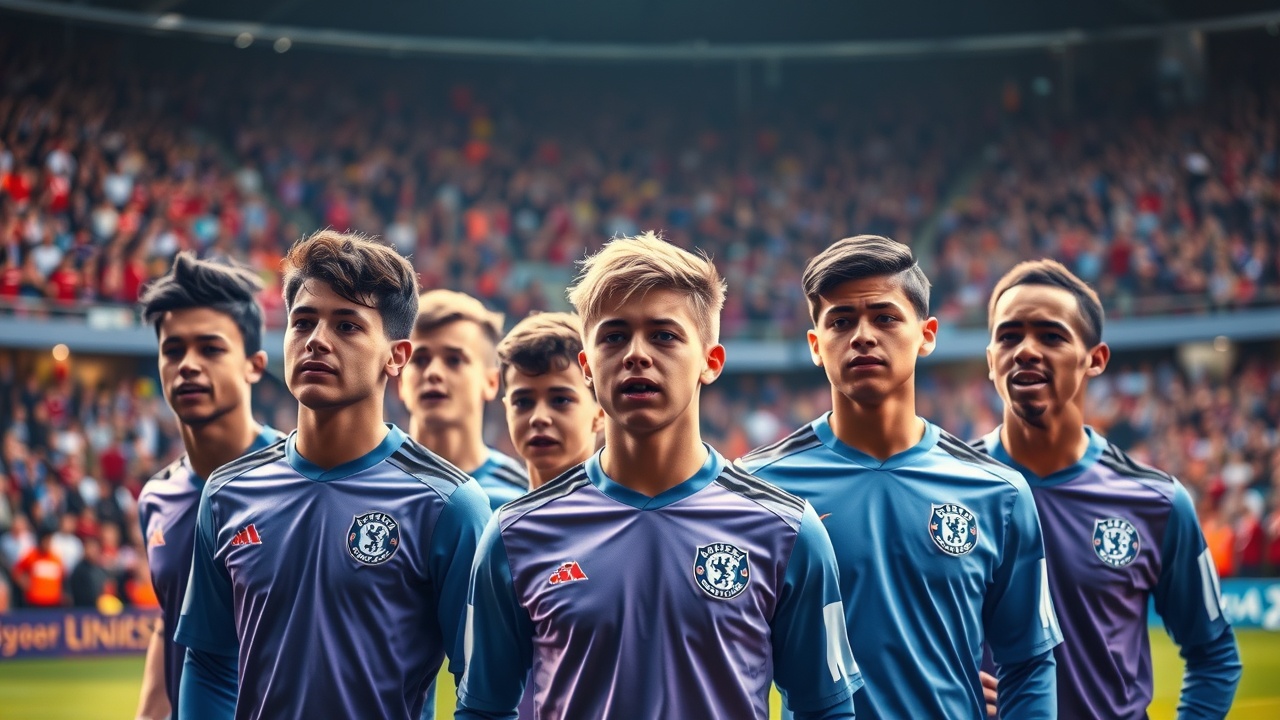Football Transfers: A Shift in Strategy
In the ever-evolving landscape of football transfers, age is just a number, or so it seems. While being 27 years old is hardly old, Arsenal’s decision to invest heavily in Viktor Gyokeres deviates from the prevailing trend of Premier League clubs favoring younger talent. Such moves stand out as many teams, including Liverpool — who recently secured Florian Wirtz for a staggering £100 million — prioritize youthful prospects. Wirtz’s acquisition marks yet another example of the current Premier League climate, where three players aged 22 or younger have fetched over £100 million within the last four seasons, along with Chelsea’s investments in Moises Caicedo and Enzo Fernandez.
The Changing Mindset of Recruitment
This surge of interest in youthful talent speaks volumes about the changing mindset of football clubs in the 2020s, but how does this shift manifest in recruitment strategies? One method to analyze this trend involves averaging the ages of new signings. However, this approach sometimes overlooks the subtleties of squad creation. Teams often bring in budget-friendly signings to fill immediate gaps rather than establish foundational players.
To tackle this issue, a new metric weights a player’s age by their transfer fee. This method enhances the impact of costly signings, providing a more accurate depiction of recruitment priorities. Results reveal an encouraging trend: the weighted average age of signings dropped below 23 in the previous season — a first in Premier League history — and current indications suggest this focus on youth continues.
Financial Implications of Youth Recruitment
It’s important to note that this trend favors clubs with deeper pockets. Chelsea, following its takeover, has spent an astonishing £865 million on players aged 21 or younger, outpacing Manchester City, which has invested £343 million on youthful talent. Historically, the wealthiest clubs tend to lead the charge in acquiring younger players, typically targeting signings around 23 years of age to rejuvenate their squads for ongoing championship aspirations. In contrast, clubs fighting relegation prioritize immediate survival by recruiting older, more experienced players, who, on average, are two years senior to those signed by title contenders.
Emerging Strategies in Youth Recruitment
Yet, the paradigm appears to be shifting. The insights of legendary manager Alex Ferguson on nurturing youth emphasize both in-team development and profitable player sales. During Ferguson’s tenure at Manchester United, they boasted the league’s most youthful weighted transfer age, closely followed by clubs like Liverpool, Chelsea, Arsenal, and Tottenham. However, the landscape has changed significantly since then, as clubs like Brighton & Hove Albion and Brentford, both known for their analytical approach, have emerged as leading figures in youth recruitment.
Brighton and Brentford have adopted a more aggressive ‘buy young, sell high’ strategy. Their average signing age is more than a year younger than that of Manchester United during Ferguson’s time, reflecting an innovative approach to player trading that allows them to compete financially without the commercial revenues of the Premier League’s elite. Transfer fees paid to acquire players like Joao Pedro, Caicedo, and Marc Cucurella have fetched high profits for Brighton, whose model showcases their success in outmaneuvering larger clubs.
Shifts in Transfer Expenditures
Recent developments point to a broader shift in transfer strategies. Traditionally, a significant proportion of transfer expenditures went towards strikers, particularly in the 1990s when over 30% was allocated to forwards. As football has evolved, the prominence of traditional center-forwards has waned, with clubs now investing less than 20% in this position over the last four seasons, favoring versatile midfielders instead. However, with new signings like Hugo Ekitike to Liverpool and Gyokeres anticipated at Arsenal, the importance of center-forwards may be reconciling with current trends.
Typically, physical maturity plays a vital role in a center-forward’s development, with peak performance occurring around the age of 27. In contrast to younger attacking midfielders, who offer immediate impact and growth potential, top clubs might hesitate to invest in unproven strikers but can still recognize Gyokeres as a valuable addition to Arsenal’s offensive setup.
The Balance Between Immediate Success and Long-term Viability
Ferguson’s reflections on acquiring Robin van Persie for £24 million, the highest fee for a player over 27 at the time, underscore the financial anxieties surrounding older players. Although Van Persie’s goals aided United’s last title run, concerns over his age materialized as he was later sold for a fraction of his purchase price, symbolizing the precarious balance between securing immediate success and pursuing long-term viability.
Arsenal seems to mirror United’s approach, gambling on a proven asset like Gyokeres to strengthen their lineup in hopes of immediate results. Meanwhile, the rest of the league largely banks on up-and-coming talents, charting a path toward a promising future for English football.




